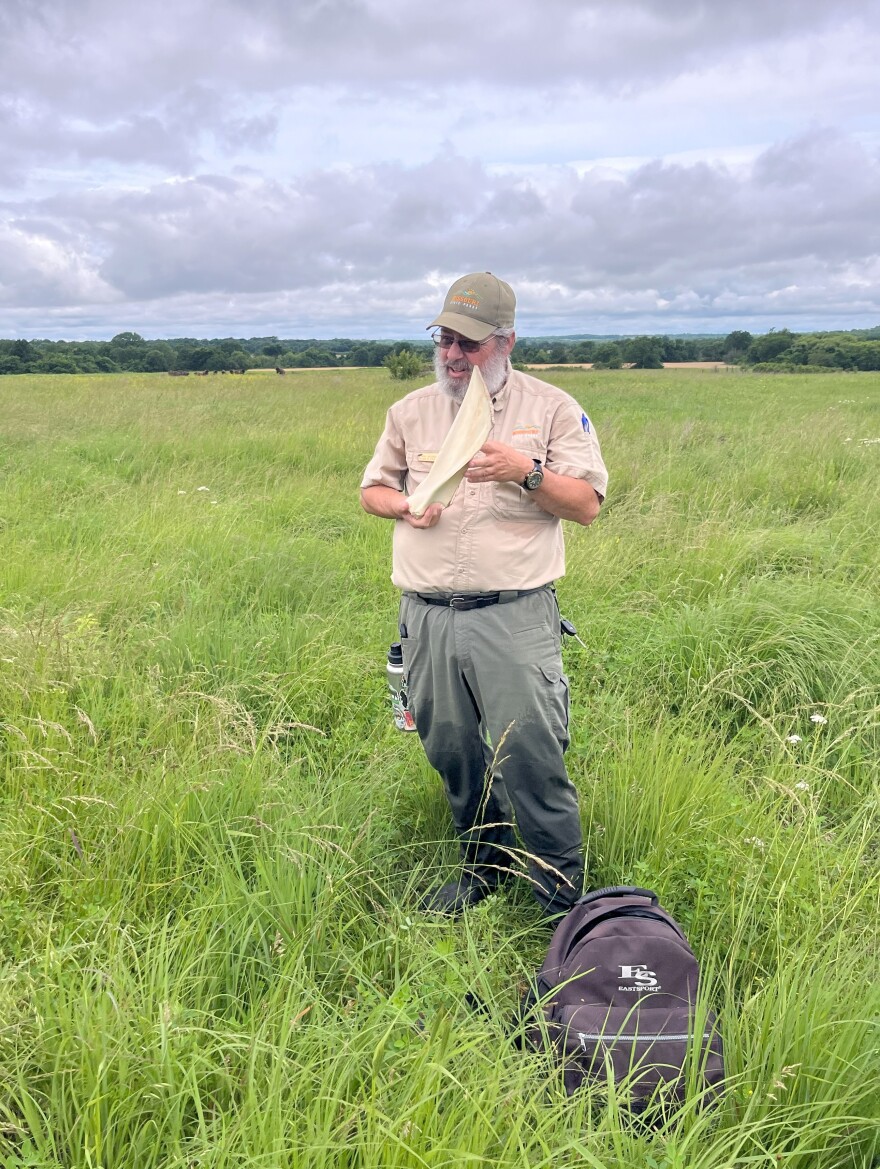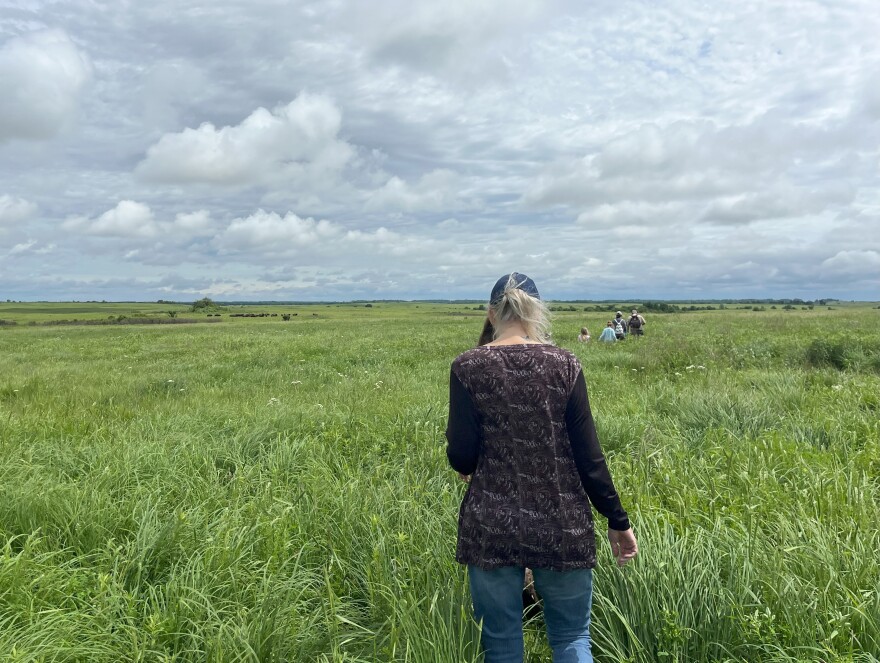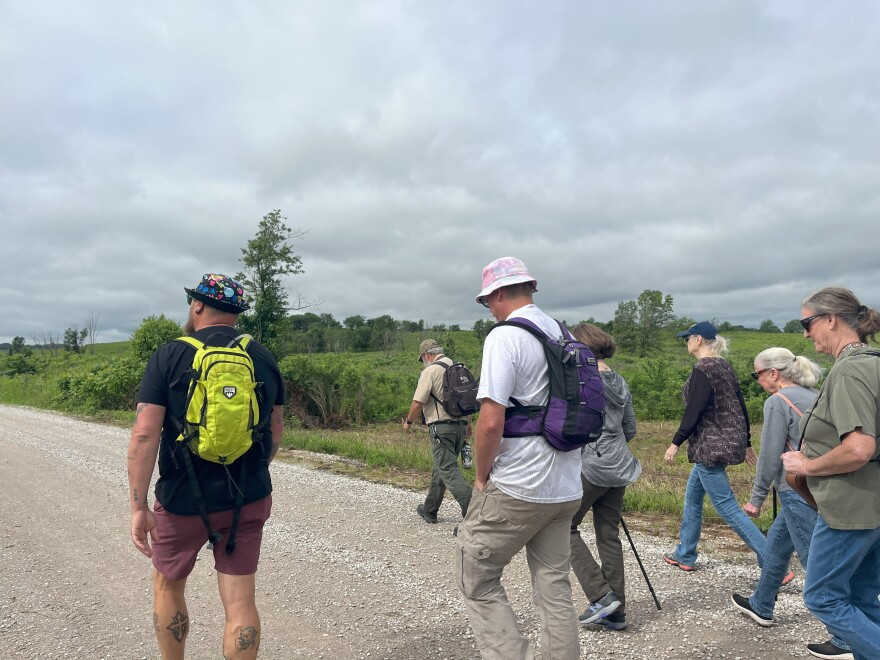Visitors have the opportunity to see the bison whenever they visit the park, but sometimes the herd is not near the roads or hiking trails. The park is situated on nearly 4,000 acres of land, north of Mindenmines and U.S. 160., and the bison roam on just under 3,000 of those acres.
“We will ask other staff if they've seen the bison and try and guide people as best we can to where they've been seen,” park naturalist Dana Hoisington said. “But sometimes there's days where we don't see them at all.”
So once a month, Prairie State Park hosts guided hikes to take visitors closer to where the bison are. On the morning of the most recent ‘bison saunter,’ Hoisington went out at 7 a.m., giving him plenty of time to find the animals before the hike started at 10 a.m.

“Sometimes it takes three hours to find them,” he said. “It didn’t today, but it did take some looking.”
Hoisington then led 20 visitors down the main gravel road, one of the hiking trails and finally through the tallgrass before they spotted a group of about 25 bison, and made sure to stay at least 100 yards away. While the visitors watched, Hoisington shared information about the herd, about bison in general and about the park.

With this educational factor, the saunters not only provide a good chance for seeing the bison, but they also provide opportunities to explore the prairie and learn more about it.
“A lot of people don't have a lot of familiarity with prairies, and bison saunters are a way to get people to come,” Hoisington said. “They're charismatic megafauna, you know, a big animal. So if we can get them here, we can talk to them about prairies and bison, and maybe they become a prairie enthusiast where they decide they want to explore it more and come up more on their own.”
However, despite the bison being such an attraction for the park, the herd will never get much larger than what it currently is. According to Hoisington, they keep the number between 30 and 60 to avoid damaging the prairie with overgrazing.
“The peak (of the herd) was around 140 or 150,” Hoisington said. “It was awesome to see that many, but if we have so many that we're damaging the prairie, we're not doing our job right.”
Prairie State Park is home to the largest tallgrass prairie landscape in Missouri. Part of it is a reclaimed strip mining area, but most of it is remnant, which means it was never plowed. 500 species of plants are preserved on the land, some of which don’t respond well to grazing.
“Grass is fine coming back, but some of the prairie forbs can be a lot more sensitive, and they can't handle that much grazing,” Hoisington said. “Especially if it's for several years in a row, it can decrease the amount of those forbs that are here, the wildflowers that are here, and some of them can die out.”
No matter what draws people to the park, though, it’s the people themselves that make activities like the bison saunters so enjoyable for Hoisington. For example, once when the herd was closer to 140 animals, he and a group of visitors were watching about 30 of the bison. After a while, they started to run, and suddenly joined up with the rest of the herd and went “thundering across the prairie,” as Hoisington described it.

“The best thing was that I had people to share with,” he said. “I mean, we get to see cool stuff a lot out here, but what we can share it with the public, that's the best. And nothing is scripted, it just happened and it was just amazing.”
The bison saunters take place typically on the first Saturday of every month, except for October when the bison are corralled for their annual health checks. The next is scheduled for July 12 due to the July 4 holiday weekend. More information can be found on the park’s website and Facebook page.
Copyright 2025 KRPS. To see more, visit Four States Public Radio.



